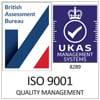This article is a guest post by Augusta Henning, CV-Library.
The unemployment rate across the UK is at the lowest it’s ever been and while this is great news for our economy, it does mean that there are fewer candidates proactively looking for work. As a result, organisations are under pressure to target passive job hunters, in order to fill their vacancies.
One of most popular ways to do this is through CV search. After all, not only does it mean you can scan a CV Database for the most relevant candidates, you can then contact them about your vacancy, introduce them to your brand and start to build talent pools for future use.
That said, if you don’t feel confident about your search techniques, the thought of having to do this can seem uninspiring. To help you out, read on for our advice on how to conduct the best keyword searches when hiring.
Don’t just focus on job title
Every CV Database, whether it’s on an ATS or a job site, will include a ‘keywords’ field in its search functionality. This enables you to hone in on the specific skills, job titles, experience and education that you’re looking for in your potential new recruit.
You should focus on keywords that cover each of these areas – not just the candidate’s job title. After all, just because their current job title isn’t a direct match to your role, it doesn’t mean they aren’t the right fit for the job.
For example, if you’re looking for a Marketing Manager, relevant candidates may use a different term, such as Marketing Executive, Head of Marketing, Brand Manager, Marketing expert and so on.
Mastering Boolean search
The basics
The Boolean method of searching enables you to achieve a more specific search. By combining keywords and phrases within the Boolean operators AND, OR, NOT, “speech marks” and (brackets), you are able to limit, widen or define your search. This means that you’re presented with only the most relevant candidates. Here’s how each of these operators work:
- AND – for example, sales AND marketing retrieves CVs containing both keywords
- OR – for example, sales OR marketing retrieves CVs containing either one of the keywords
- NOT – for example, sales NOT marketing, retrieves CVs containing one keyword, but NOT another
- Speech marks – for example, “Marketing Manager” retrieves CVs containing the key phrase in the speech marks - if you don’t use speech marks, your search will return CVs from candidates who have included these words separately
- Brackets – for example, Events AND (“marketing” or sales) retrieves CVs that contain the main keyword and one of the keywords used in the brackets
Other tips to consider include:
- ANDs and ORs should not be in the same search, unless brackets are used
- Abbreviations can help you to find candidates who haven’t put the full description of their role on their CV. For example – QA (instead of Quality Assurance) or RGN (instead of Registered General Nurse)
- Sometimes, using shorter industry words can draw in a range of people. For example, using “engineer” instead of “engineering” allows phrases like engineers, engineering, engineered to match
Targeting your search even further
For a more complicated search, you could use a combination of the Boolean commands mentioned above. These can be useful if you’re hiring for a niche position or want to find a candidate with a very specific set of skills.
Start by writing down the job title of the role you’re recruiting for, as well as another variants it might have. Then, make a note of any programs the candidate needs to be proficient in, skills they need to have, or any other industry-specific terms.
Once you’ve done this, switch out the text in this search string for what you’ve written down on your list: “the job title you’re recruiting for” OR “enter another variant” OR “enter another variant” OR “enter another variant”.
Filtering your search results
Hopefully, you’ll see the most relevant candidates at the top of your search results. But don’t forget that there are other ways to filter your search, such as when the CV was last updated, salary bands, location and more. All of these will help to ensure you get the best candidate matches.
Let technology do the work for you
If you’re still not comfortable with conducting keyword searches, you might want to consider using Boolean builder technology to help you out. Some sites are even implementing this into their CV Search to help employers get the best results.
In fact, at CV-Library, we’ve even added a new Popular Searches feature which suggests other popular terms based on the job title or industry you’re searching for, to help broaden your search.
Consider using specialist semantic search technology
You can also use specialist semantic search technology, such as DaXtra Search, to simplify and streamline the process. DaXtra Search allows you to run either a Boolean or a natural language search - so you can search just as you would on a search engine, or by using a job spec which expands to create a matching query to find the most relevant candidates.
It searches, filters and sorts data from multiple locations simultaneously, including your CV database, online networking sites and job sites such as CV-Library. This eliminates the need to learn complex queries and allows you to get the most out of your CV database and job site.
Are you conducting the best keyword searches?
CV search can be extremely powerful. Sites like CV-Library used alongside DaXtra technology can help to connect you with the most relevant candidates.
Spend time on your searches and gauge whether your technique is working by monitoring the number of relevant CVs the system is finding for you. You might find that making a few changes to the way you search could present you with the right person for the job.
— By Augusta Henning, CV-Library



